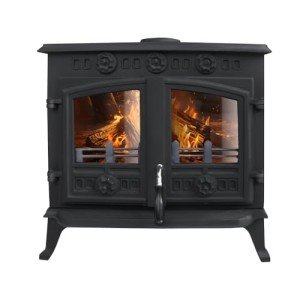Multi Fuel Stove Small 101:"The Complete" Guide For Beginners

The Versatility of Multi-Fuel Stoves for Small Spaces
In the ever-evolving landscape of home heating solutions, multi-fuel stoves have emerged as a popular choice, particularly for those living in compact living spaces. These stoves, which can burn various kinds of fuel such as wood, coal, and pellets, provide significant benefits in regards to effectiveness, cost-effectiveness, and ecological friendliness. This post explores the benefits of small multi-fuel stoves, their functionality, and some often asked questions to help prospective purchasers make notified decisions.
The Benefits of Using a Multi-Fuel Stove
1. Flexibility
Among the primary advantages of a multi-fuel stove is its adaptability. Double Sided Multi Fuel Stove can pick from various kinds of fuel based on accessibility, cost, and personal choice. The flexibility of burning wood, coal, or pellets permits more effective and customized heating.
2. Cost-Effective Heating
In numerous regions, fuel costs fluctuate considerably. A multi-fuel stove supplies the option to switch between various fuel sources as market value alter. For example, throughout the cooler months, coal might be cheaper than wood, permitting users to adjust their heating approach in reaction to price shifts.
3. Ecological Considerations
Burning fuels like wood and pellets is frequently thought about more sustainable compared to nonrenewable fuel sources. Multi-fuel stoves can use renewable options, decreasing carbon footprints. In addition, numerous modern multi-fuel stoves are developed to burn fuel easily, leading to fewer toxins and better effectiveness.
4. Space-Saving Design
Small multi-fuel stoves are created for compact areas, making them perfect for homes, small homes, or small cabins. Numerous designs integrate aesthetic style with practical effectiveness, offering heat without overwhelming minimal area.
5. Reputable Heating Solutions
Multi-fuel stoves supply a trustworthy source of heating, specifically during power blackouts. They allow property owners to maintain warmth even when electrical power is not available, making them a useful option for areas prone to extreme weather.
How Does a Multi-Fuel Stove Work?
Multi-fuel stoves work through a combustion chamber where various fuels are burned.
- Air Circulation: These stoves are equipped with a system that ensures optimum air blood circulation, which is important for achieving high-efficiency levels and minimal emissions.
- Fuel Selector: Many models feature a fuel selector that permits users to choose the kind of fuel being burned, boosting efficiency.
- Heat Exchangers: Some stoves feature heat exchangers to optimize heat output, enabling the stove to warm the room effectively.
Table: Comparison of Common Multi-Fuel Stove Fuels
| Fuel Type | Schedule | Effectiveness (%) | Environmental Impact | Cost (per load) |
|---|---|---|---|---|
| Wood | High | 70-85 | Moderate, eco-friendly | ₤ 200 - ₤ 300 |
| Coal | Moderate | 65-80 | Higher emissions | ₤ 150 - ₤ 250 |
| Wood Pellets | Moderate | 85-90 | Low, sustainable | ₤ 250 - ₤ 400 |
| Biomass | Low | 75-90 | Low, renewable | Differs commonly |
Choosing the Right Multi-Fuel Stove
When choosing a small multi-fuel stove, a number of elements require factor to consider:
Size and Space
- Measure the available area to guarantee compatibility.
- Ensure the stove fits the visual of the space.
Fuel Type
- Consider the primary fuel type available in your region.
- Examine which fuel uses the very best cost-efficiency for your requirements.
Efficiency Rating
- Examine the stove's effectiveness rating (the greater, the much better).
- Try to find stoves accredited for very little emissions.
Installation and Ventilation
- Evaluate installation requirements, consisting of venting requirements.
- Seek advice from professionals when essential to ensure security and adherence to guidelines.
Brand Reputation
- Research study brand names for dependability and customer care.
- Read evaluations and look for recommendations from present users.
Frequently Asked Questions About Multi-Fuel Stoves
1. Are multi-fuel stoves safe to utilize?
Yes, multi-fuel stoves are generally considered safe when installed and preserved according to the manufacturer's standards. Regular cleaning and evaluations can help prevent issues.
2. Can I utilize various fuels in the exact same stove?
Yes, among the primary benefits of multi-fuel stoves is their capability to burn different fuels. Constantly describe the maker's guidelines concerning compatible fuels.
3. How do I keep a multi-fuel stove?
Regular upkeep consists of cleaning up the ash pan, checking flues, and examining seals. Annual expert evaluations are recommended to make sure safe operation.
4. What is the typical lifespan of a multi-fuel stove?
With proper upkeep, a well-constructed multi-fuel stove can last anywhere from 15 to 25 years.
5. Do I need an unique chimney for a multi-fuel stove?
Many multi-fuel stoves require a chimney that satisfies particular policies regarding flue size and material. Seek advice from a professional for suggestions tailored to your circumstance.
In conclusion, small multi-fuel stoves use remarkable adaptability, practical heating options, and energy performance, making them an excellent option for small areas. By comprehending the advantages and factors to consider associated with multi-fuel stoves, homeowners can take pleasure in a comfy, affordable, and environmentally friendly heating option. As city living continues to trend towards limited area, these stoves represent a forward-thinking method to conventional heating approaches.

